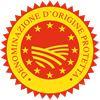Description
The Bonchester Cheese PDO is made with nonpasteurised milk from Jersey cows.
Production Area
Bonchester Cheese PDO is made in Scotland along the Cheviot Hills on the border with England.
Production Method
The local milk is heated to 32°C and left to incubate at a temperature of between 25°C and 32°C for 90 minutes with the addition of starter cultures. An hour after the addition of rennet the curd is cut and 20 to 30 minutes later placed in moulds. The cheeses are turned several times and are then salted in brine at 13°C (for 15- 20 minutes for small cheeses and 30 to 40 minutes for large ones). Once drained the cheeses are turned daily for four days and then left to mature for 6 to 12 days during which time they are also turned daily.
Appearance and Flavour
Bonchester Cheese PDO is cylindrical in form with a white rind. The cheese is yellow in colour with a smooth texture and a mild taste. It has a minimum of 20% fat content and a maximum of 60% water content.
History
Bonchester Cheese PDO has been produced since 1980 on the Easter Weens Farm using traditional methods and with milk exclusively from Jersey cows.
Gastronomy
Bonchester Cheese PDO must be stored in a cool place and if it is already cut should be wrapped in foil and kept in the refrigeretor. It is excellent on bread or toast since its soft consistency makes it easy to spread.
Marketing
This cheese is sold as Bonchester Cheese PDO mostly between April and December. It is sold whole or prepacked and suitably protected in cuts of various weights.
Distinctive Features
The climate and soil in the area favours the growth of certain types of natural vegetation. The flavour that these pastures confer on the milk produced by the Jersey cows plus the microbial flora that has colonised the dairy and the traditional method used to make the cheese all contribute to give Bonchester Cheese PDO its distinctive characteristics and flavour.





